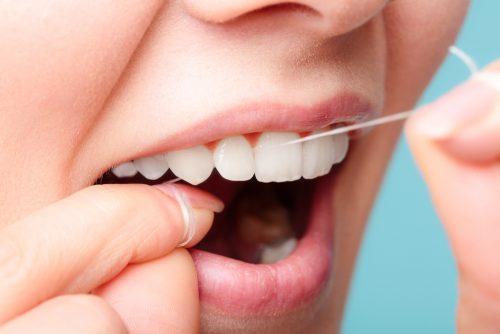
Flossing your teeth is just as important as brushing.
If you’re relying solely on brushing to keep your teeth clean, you’re missing nearly half the surface area of your teeth. Which, not surprisingly, lies between them. For that reason alone, flossing should be an essential part of your oral care routine and never an optional extra.
By using floss you’re helping to prevent gum disease, tooth decay, and halitosis (otherwise known as “bad breath”). That’s a considerable amount of upside for just a couple of minutes effort each day.
A part of your routine
It’s always best to floss when you’re not in a rush or when you’re too tired to do it well. Tired at the end of the day? You can always floss in the morning. Alternatively, if you like to go to bed with a clean mouth then floss before your nightly brush. If you have kids they should begin flossing, with your help up until about age 8, as soon as they have two teeth in contact.
How to floss
Your dentist is the most qualified person to instruct you on flossing correctly but there are some basic tips:
Tip 1. Wind approximately 45 cm of floss around your middle fingers and grip it tightly between your thumbs and index fingers.
Tip 2. Keeping the thumb and forefingers close together, gently guide the floss between the teeth, taking care not to cut or damage your gums with abrupt movement. Use a side-to-side motion to ensure the sides of both teeth are cleaned equally.
Tip 3. To clean the “neck” of the tooth, which is the point where it meets the gums, curl the floss and insert it gently under the gum.
Next time you are at the dentist/hygienist ask them to check your technique. Or if you haven’t been for a while make an appointment today.
